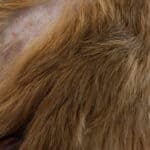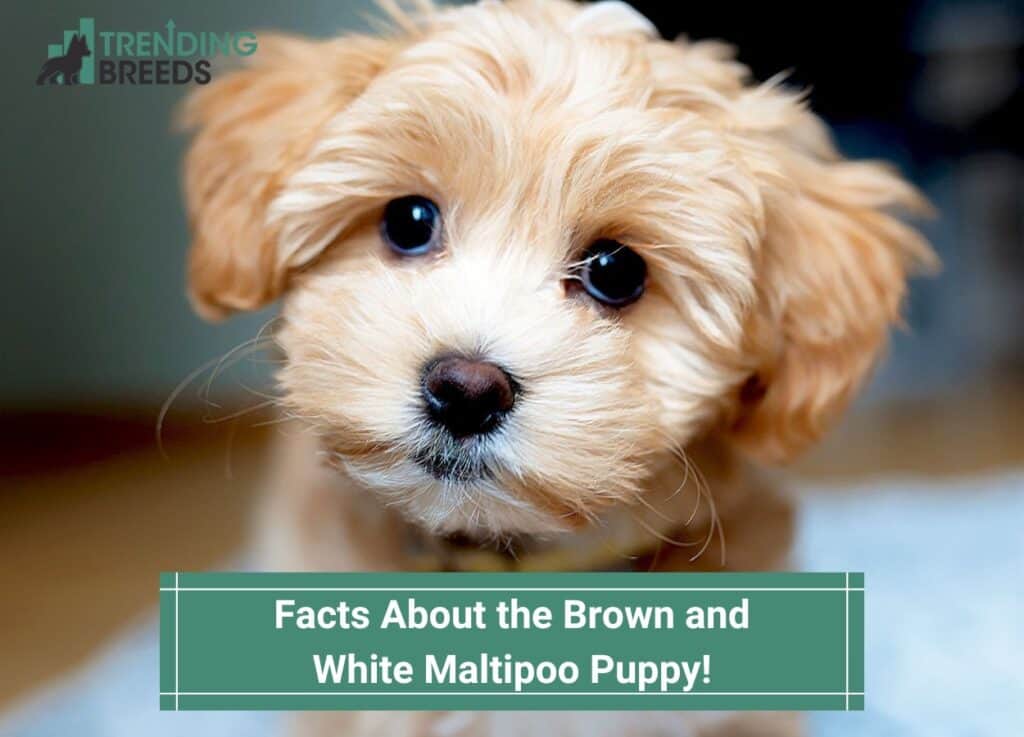
Today, we are going to talk about some interesting facts about the brown and white Maltipoo puppy.
In recent years, crossbreeding Poodles has become increasingly popular. There are several breeds of mixed puppies that pet owners enjoy, from Labradoodles and Goldendoodles to smaller breeds like Cavipoos.
Have you been thinking about getting a Maltipoo for your family? These adorable and friendly dogs need a home that can accommodate them. Here are some interesting facts to keep in mind.
Other articles you would like: When Is A Maltipoo Full Grown? and Do Maltipoos Like Water?
Table of Contents
1. Different Generations Are Different Colors

Although some colors are deep, dark solid colors, most are not. First-generation Maltese dogs are solid white because one parent is a Maltese. If one parent is solid white and the other is colored, the solid white will mix.
As a result, the coloring usually fades. When a dark brown sire is paired with a white Maltese, puppies are most likely to be tan in color. A diluted coat also refers to this fading.
2. They Still Suffer From Tear Stains
Especially in dogs with light coats, tear stains are common. Dye leaks from plastic bowls that are deeply colored can be the cause of red yeast infections.
It is possible for brown and white maltipoos to develop tear stains as well, but their fur color makes them less noticeable. Maltipoos with lighter-colored fur are more likely to have this issue, but it is not dangerous.
The tear staining is entirely harmless as long as it does not emit any odor, and the color does not appear abnormal (red or pus-like, which are signs of infection).
Regularly cleaning the eyes and having them checked by a veterinarian are essential for your pet’s safety.
3. They Are Heat Sensitive
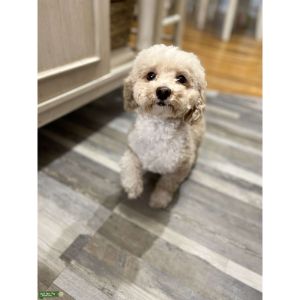
Summer heat changes can affect them, so they should stay in the shade and take walks closer to dawn and dusk when they are outdoors.
Hot sidewalks can be avoided by wearing booties. Maltipoo dogs should be protected from cold weather in winter by wearing sweaters and spending as little time outside as possible.
4. They Aren’t Hypoallergenic
There are no dog breeds that are truly hypoallergenic! Not one of them. Many Maltipoo parent has visited their local vet with red puffy eyes, saying “They said these dogs were hypoallergenic!”.
Unfortunately, this isn’t true. In spite of their not being hypoallergenic, these cute little pups are less likely to trigger allergies in people who suffer from allergies.
There are some people who are allergic to pet dander, meaning that all dogs are a no-no for them. However, many pet allergy symptoms are caused by a protein in the saliva of the pet (some people have allergies to the fur).
During the shedding process, dogs spread the bacteria from their bodies to their coats, which are released into the air.
Getting back to our curly-haired pal, Maltipoos are well known for their low shedding, although it is worth testing out first. In addition to producing less dander or dead skin cells, their coats are hypoallergenic because they do not produce as much dander.
Allergy symptoms are not caused by the dog’s hair itself but by the substances it collects, such as saliva and urine. Keeping your allergy symptoms under control should be easier with the Maltipoo since it sheds minimally.
You can determine if your Maltipoo is causing your allergies by looking for certain symptoms. There are several common symptoms associated with nasal congestion, including sneezing, runny noses, itchy and watery eyes, coughing, and postnasal drip.
A Maltipoo could be the perfect solution for you if you haven’t become aware of your allergy to pet dander, and giving up the dog won’t be possible.
Immunotherapy could help if you haven’t discovered that you’re allergic to dog dander and have already adopted the dog.
Using HEPA air cleaners throughout your home can also help reduce allergy symptoms, as well as removing your carpet and replacing them with hard floors.
Keep your Maltipoo out of your bedroom and any other room you use frequently, and give your Maltipoo a weekly bath.
Even though it is still a relatively new breed of dog, the Maltipoo is becoming increasingly popular. Invented in the USA in the 1990s, it has only been around for 30 years.
Toy poodles and Maltese terriers cross to make this breed. In order to create an affectionate and small dog, Maltipoos were specifically bred.
5. They Don’t Shed Excessively
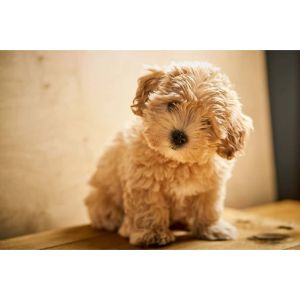
There is one thing Maltipoos have in common, even though they can have three kinds of coats. This is due to the fact that they have only one layer of coat, as we mentioned earlier.
Due to their longer hair growth cycle, dogs with single-layer coats don’t shed excessively every two years like dogs with double-layer coats.
Furthermore, it can lead to their coats getting quite long and needing to be trimmed. It is still true that they shed some hair, but it is much, much less than before.
Additionally, Maltipoos don’t trigger allergies as much as other dogs because they don’t shed a lot of hair. In terms of hypoallergenicity, Maltipoos are pretty close to being hypoallergenic.
6. They Vary In Size
Due to their crossbreeding with two different dog breeds, Maltipoos vary in size greatly. A maltipoo’s weight can range from 5 to 20 pounds, and its height can range from 8 to 14 inches.
Genes that parents pass down to their children determine each dog’s size. Poodles – especially miniature poodles – are the larger of the parents, while Maltese terriers are fairly small.
7. Brown Maltipoos Are Rare
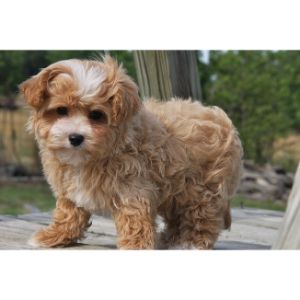
There are many colors to choose from for Maltipoos, including gold, gray, cream, and white (the most common color). Maltipoos with brown coats, on the other hand, are actually quite rare.
Lighter colors are preferred by the breed standard, which is one of the main reasons. In order to produce light-colored puppies, lighter-colored dogs are bred together.
However, it is quite difficult to find Maltipoos that are dark brown in color. It is highly unlikely that you will be able to find a Brown Maltipoo outside of a Parti Maltipoo breeder.
There is no Poodle or Maltese breed that has brown as their color. Maltipoos are brown because of their poodle genetics. Breeding a brown Maltipoo, however, can be challenging because brown frequently carries the same genes as black or silver.
8. They Cannot Be Registered With The AKC
It is not possible to register a maltipoo with the AKC Dog Registry since it is not a purebred dog. Through the Canine Partners Program of the AKC, they can be registered.
In addition to the International Designer Canine Registry, there is also the American Canine Hybrid Club, who accept Maltipoos.
American Kennel Club registration is not available for Maltipoos, despite the fact that they originated in America and are extremely popular there.
Unlike the American Kennel Club, Maltipoos are considered cross breeds and not pure breeds. Various registries call them by different names and they have a variety of names.
Some of these names are Maltese-Poodle, Maltese-Poodle, Multapoo, Multipoo, Maltese-Poodle, Malt-oodles, MaltiPoodle, mPoo.
9. They Change Colors
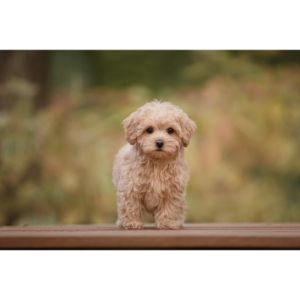
When Maltipoo puppies reach their forever home, they will likely be a different color, and when they reach adulthood, they’ll then be a different color again. It’s a mind-boggling process.
There is a fading gene in the Poodle breed, which contributes to this. Many Poodles have a gene associated with graying, which is called the Progressive Graying Gene.
Maltipoos can, therefore, carry this gene as well. Due to the presence of the Progressive Graying Gene in the Poodle parent, many Maltipoos will naturally lighten during their lifetime.
Many of them also hold their color, so they won’t fade. Age can sometimes make Maltipoos darker. Your Maltipoo may experience it more than once during its lifetime.
As they grow, their color may change from one when they are born to another when they are ready for purchase, and again as they become adults. They should stay the same color until they reach about 2 years of age.
Your Maltipoo may not change color throughout its lifetime, but if it does, it is said to have “held” its color. The lighter color of their coats is due to genetics, as with most other Maltipoo traits.
A gene that causes fading more specifically. Dark red coats may fade to apricot or apricot coats may fade to light red coats. While they don’t change completely, they may become lighter versions of themselves.
In some cases, just parts of the coat may change rather than the whole coat. There is a chance that the ears, muzzle, and paw pads will remain darker even when the fading gene is present.
Maltiposs are interesting little dogs and if you are considering getting a small dog, it could be a good option for you.
Understanding all these facts can help you decide if this is the right dog breed for you and your family and can lead to a happier life for both you and your pet.
You will also like:
- Interesting Facts About The Teacup Maltipoo
- What Is A Maltipoos Lifespan?
- Maltipoo Dog Breed Guide, Pictures, Sizes, And Info
For more information about the Maltipoo Breed, check out the video below:



